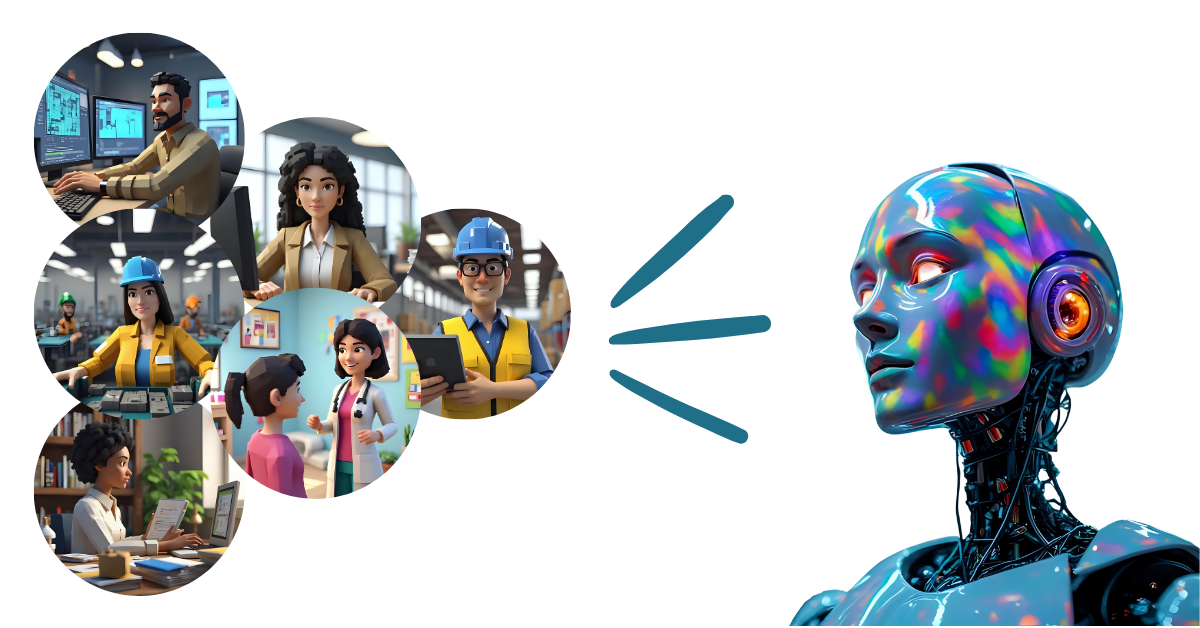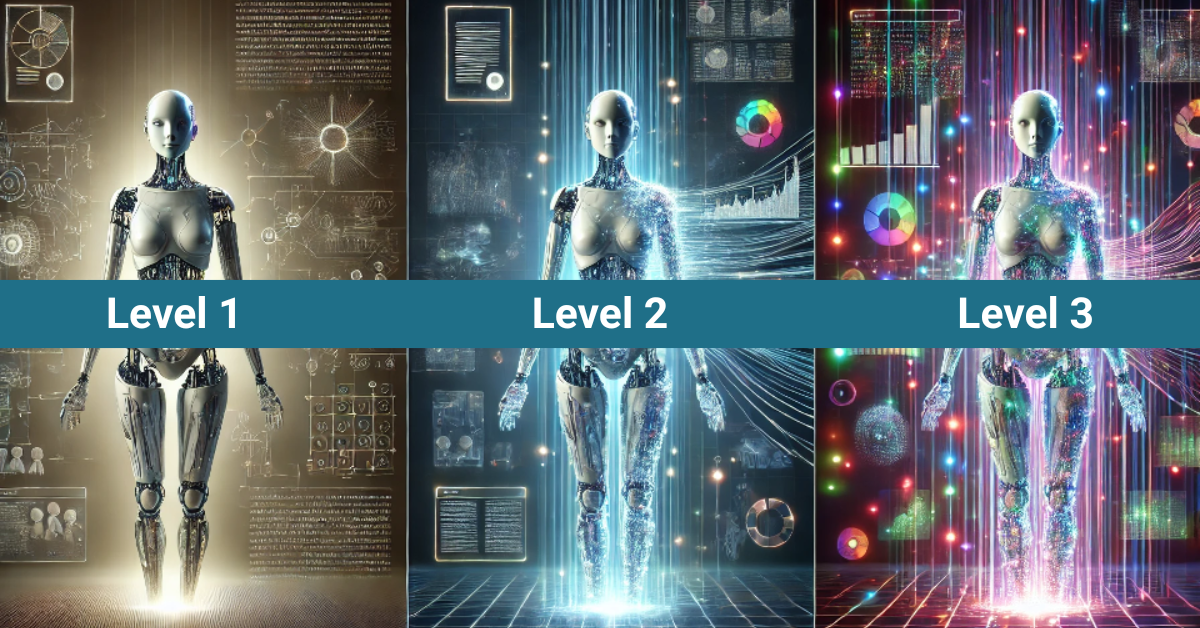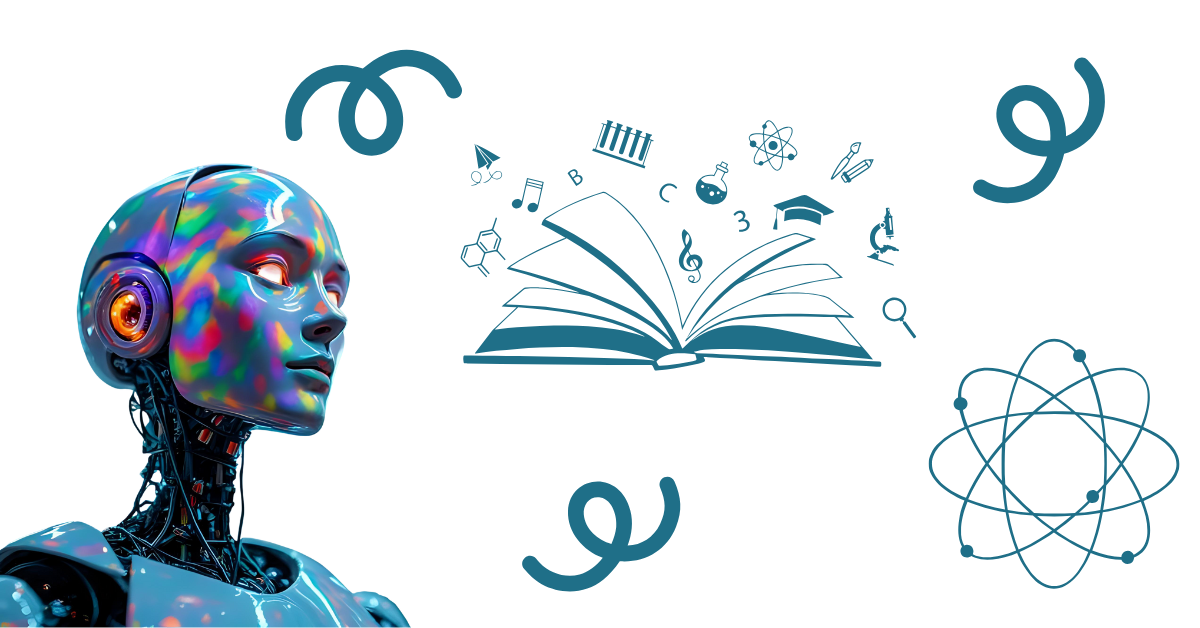From ChatGPT to Enterprise AI: Grasping Three Levels of Implementation
When businesses begin their AI journey, they often encounter a landscape full of technical terms and possibilities. To make this more understandable,...
3 min read
 Sindre Johansen
:
Jul 22, 2025 9:00:00 AM
Sindre Johansen
:
Jul 22, 2025 9:00:00 AM

There is a common misconception that AI transformation must be driven from the top. That leadership must define how artificial intelligence should be used, then roll it out to the rest of the organization. Our experience shows the opposite: The truly transformative AI use cases emerge when those working closest to the tasks get the tools in their hands.
Think about who really knows the pain points in your organization:
These people do not sit in the leadership team. They sit "far out on the front lines" - and that is precisely why they are the goldmine for AI innovation.
There is a fundamental difference between these two scenarios:
"Management has decided we're going to use AI. Here's the tool, and you're expected to use it at least X times per week."
Result: Reluctant use, minimal creativity, experience of yet another imposed system.
"Hey, check out what I figured out we can do! I'm saving two hours every day by letting AI compile the weekly reports. Want me to show you?"
Result: Genuine enthusiasm, creative application, organic spread.
Give an experienced customer service agent access to AI that can search all internal documents, and watch what happens:
Week 1: "Oh, I can get instant answers to product questions!"
Week 2: "Wait, I can create summaries of all customer complaints this month..."
Week 3: "If I combine this with our sales data, I can actually predict which customers are likely to have problems with product X!"
Month 2: The entire customer service department is using AI daily, and they have reduced average handling time by 40%.
This is not fantasy. It is what actually happens when you give the tools to the right people.

In every organization, there are employees who have developed impressive, but often invisible, expertise:
When these people get AI tools, something magical happens: Their tacit knowledge suddenly becomes scalable. They can not only solve problems faster themselves, but their way of using AI can be taught to others.
When "Karen from accounting" starts saving hours every week with AI, colleagues take notice:
This organic spread is more powerful than a hundred mandatory courses. Why? Because:
The result? Not only did she become more efficient - she taught the method to the entire department, and they reduced processing time by 60%.
A legal secretary started using AI to:
This revolutionized how the entire firm worked. Lawyers could focus on strategic advice while AI handled the repetitive work. The
firm doubled its capacity without hiring more people.
A factory operator used AI to:
This spread to other departments, and the company reduced downtime by 30%.

For this bottom-up innovation to work, certain prerequisites must be in place:
Everyone must have access to the same AI tools. No "VIP-only" features.
The AI must be able to work with the documents and data actually used in daily work.
Employees must feel it is okay to try and fail, not that every AI interaction is monitored.
Allow room for employees to explore possibilities, not just use AI for predefined tasks.
Create arenas where employees can share their AI discoveries and successes.
This does not mean leadership is unimportant. On the contrary - their role becomes even more important, but different:
The biggest gains from AI do not come from expensive consultant reports or comprehensive strategy documents. They come from "Karen in accounting" figuring out she can halve the time on the weekly report. From "Peter in the warehouse" discovering that AI can predict ordering needs. From "Ali in customer service" teaching AI to answer the toughest support questions.
When you give everyone in the organization access to powerful AI tools like Ayfie Personal Assistant, you are not just giving them a tool - you are giving them the opportunity to transform their own workday. And when that happens, they transform the entire organization from the bottom up.
The question is not: Can you afford to give everyone access to AI? The question is: Can you afford not to?
Ayfie - We believe in innovation from everyone, not just from the top.

When businesses begin their AI journey, they often encounter a landscape full of technical terms and possibilities. To make this more understandable,...

In today's digital landscape, artificial intelligence (AI) has become a powerful tool for businesses looking to streamline work processes and...

You have probably heard about the Tromsø municipality scandal, where officials used AI to help write a report about closing local schools, only to...